Rubies are among the rarest and most coveted gemstones in the world. Known for their deep red or blood red color, they have adorned royalty and religious artifacts for centuries. But not all rubies are the same.
From natural rubies to lab-created versions, each type carries its own characteristics. Some get their rich red color from chromium, while others are treated to enhance appearance.
Understanding the variety of ruby types is essential for making informed decisions—especially when quality rubies can differ drastically in value and origin.
Ruby Gemstones Types by Origin – Appearance, Treatment & Market Tier
| Type of Ruby | Origin | Typical Color | Treatment Common? | Market Value Tier | Notes |
|---|---|---|---|---|---|
| Burmese Ruby | Myanmar (Burma) | Pigeon blood red | Rare | Premium | Most prized ruby gemstone; often untreated |
| Thai Ruby | Thailand | Dark red, brownish tint | Yes (heat) | Medium | Often less transparent |
| Mozambique Ruby | Mozambique | Pinkish to vibrant red | Yes (light) | High | Strong player in ruby market |
| Madagascar Ruby | Madagascar | Pink-red, lighter shades | Yes | Budget–Medium | Often treated to enhance color |
| Indian Ruby (Manik) | India | Opaque, dark red | Yes | Low | Used in inexpensive jewelry |
| Tanzanian/African Ruby | Tanzania, Kenya | Deep red to pinkish | Yes | Medium–High | Growing reputation for good quality ruby |
| Mogok Ruby | Myanmar (Mogok) | Pure pigeon blood red | Rare | Elite | Sunrise Ruby type; world-famous clarity & hue |
Different Types of Ruby Gemstones by Origin

Ruby gemstones come from many regions, and their origin affects color, clarity, and value. Each mine produces rubies with unique traits. Some areas give us the rarest rubies. Others offer stones in large numbers. Below, I’ll explain the most common and important types of ruby stone based on where they’re found.
1. Burmese Rubies

Burma rubies (from Myanmar) are the most prized in the world. Their vivid pigeon blood red color is unmatched. Burmese rubies often display exceptional clarity, deep saturation, and strong fluorescence under UV light. These rubies are usually untreated and command premium prices due to rarity and high demand in the ruby market.
2. Thai Rubies
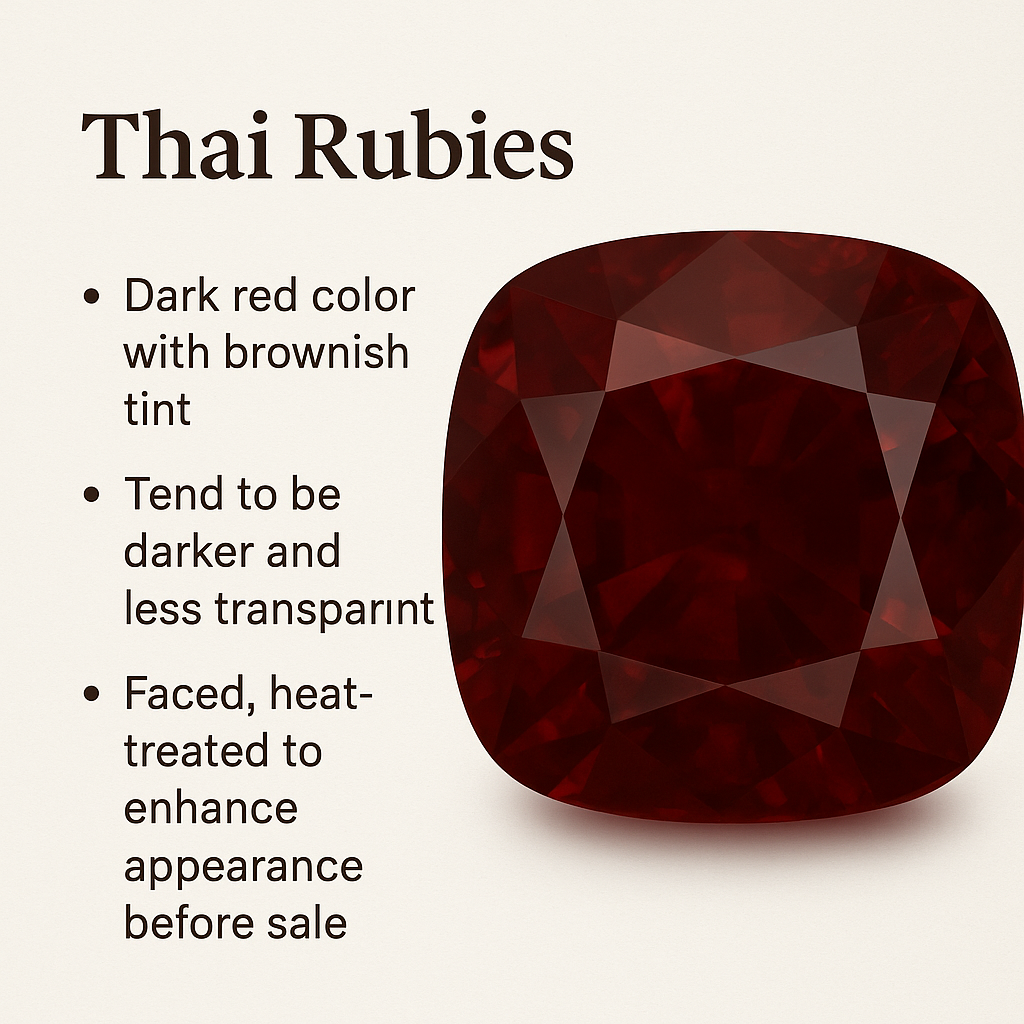
Thai rubies are known for their dark red color, often with a brownish tint. They tend to be darker than Burmese rubies and less transparent. While not as valuable, Thai rubies are more abundant. Many are treated with heat to improve their color and clarity before entering the gemstone market.
3. Mozambique Rubies
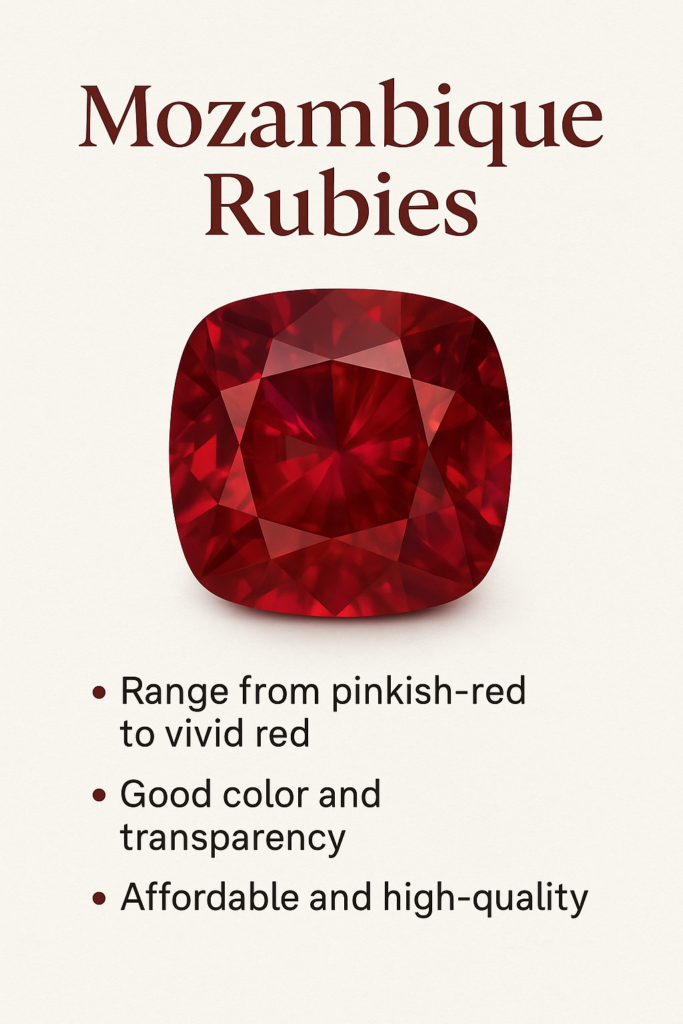
Mozambique is now a major producer of rubies. Mozambique rubies come in a range of red hues—from pinkish to vivid red. The best stones have excellent color and transparency and rival Burmese rubies.
Some even call them the future of the ruby trade. They’re more affordable but still high-quality rubies.
4. Madagascar Rubies
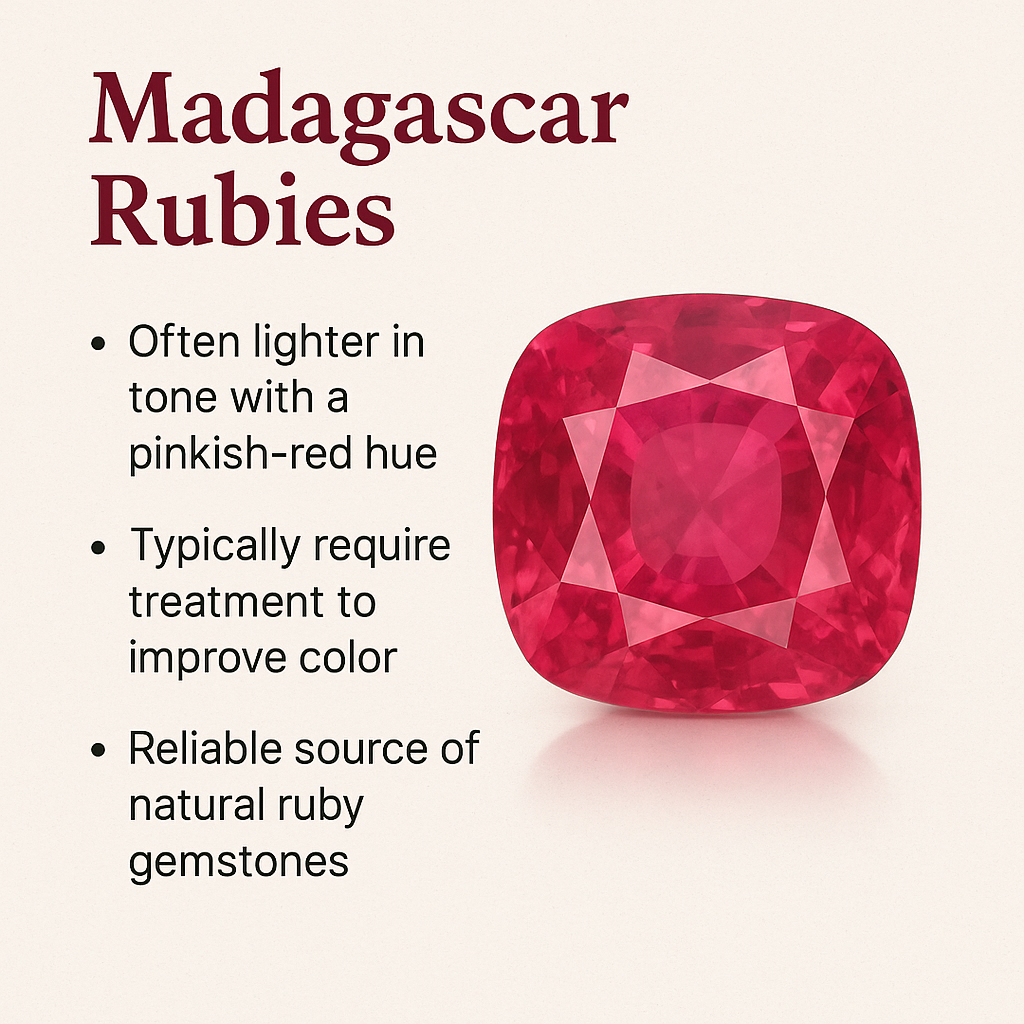
These rubies often come in lighter tones and can show a pinkish-red ruby hue. They usually need treatment to enhance their color.
While not as well-known, Madagascar ruby mines have become a reliable source of natural ruby gemstones, adding diversity to the market.
5. Indian Rubies
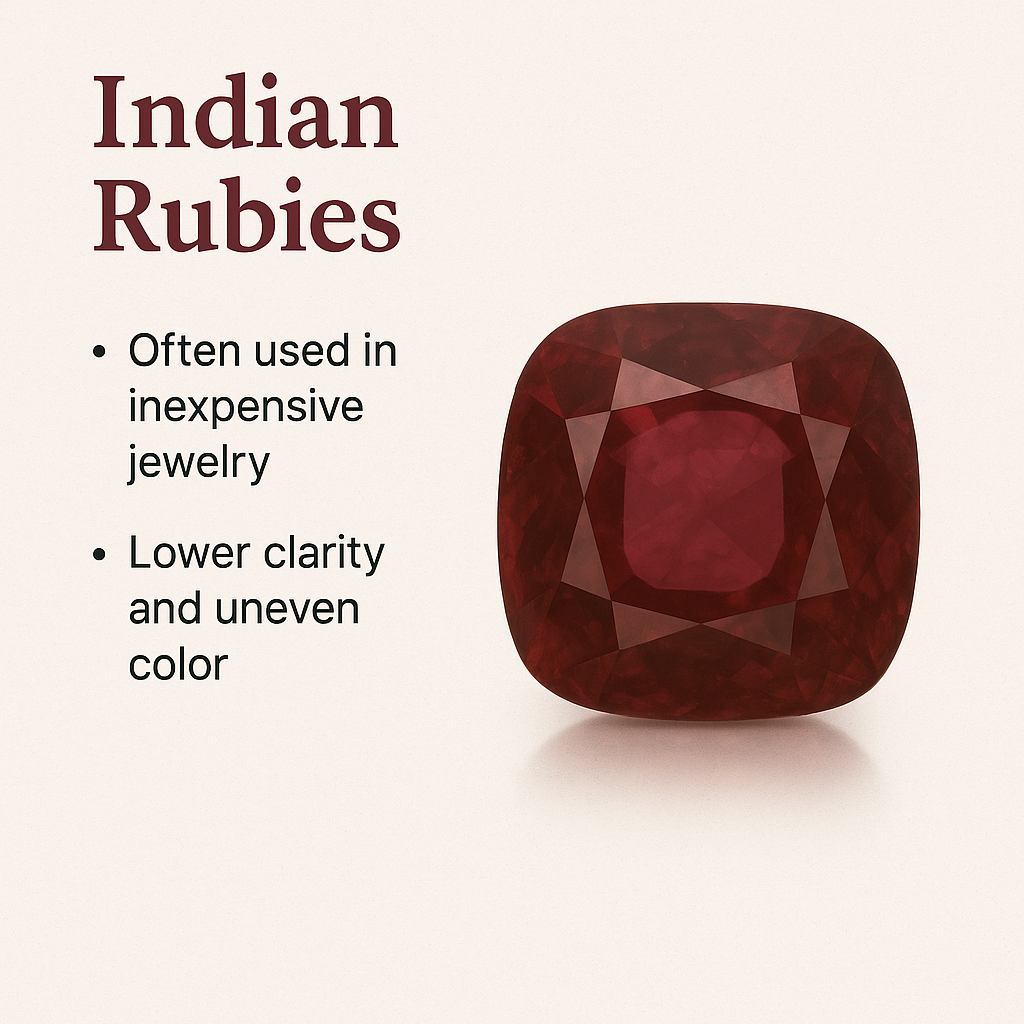
Rubies from India, also called manik stones, tend to be darker and less transparent. Historically, India was a major player in the ruby trade.
Today, most Indian rubies are used in low-cost jewelry. They’re usually less valuable due to lower clarity and uneven color distribution.
6. Untreated Rubies
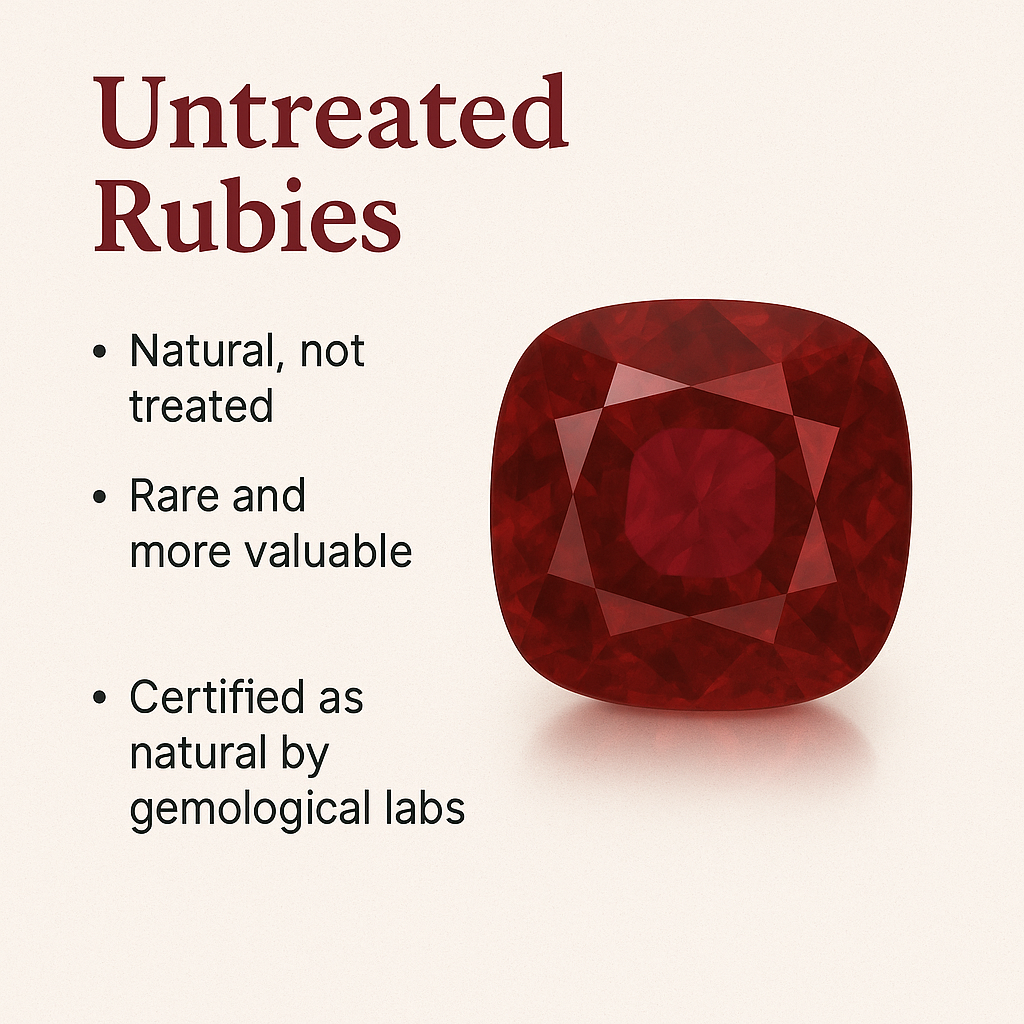
Natural rubies that haven’t been treated are rare. Most rubies available today have undergone heat or fracture-filling to improve their color and clarity.
Untreated rubies hold more value and are often certified by gemological labs to confirm their natural state.
7. African Rubies
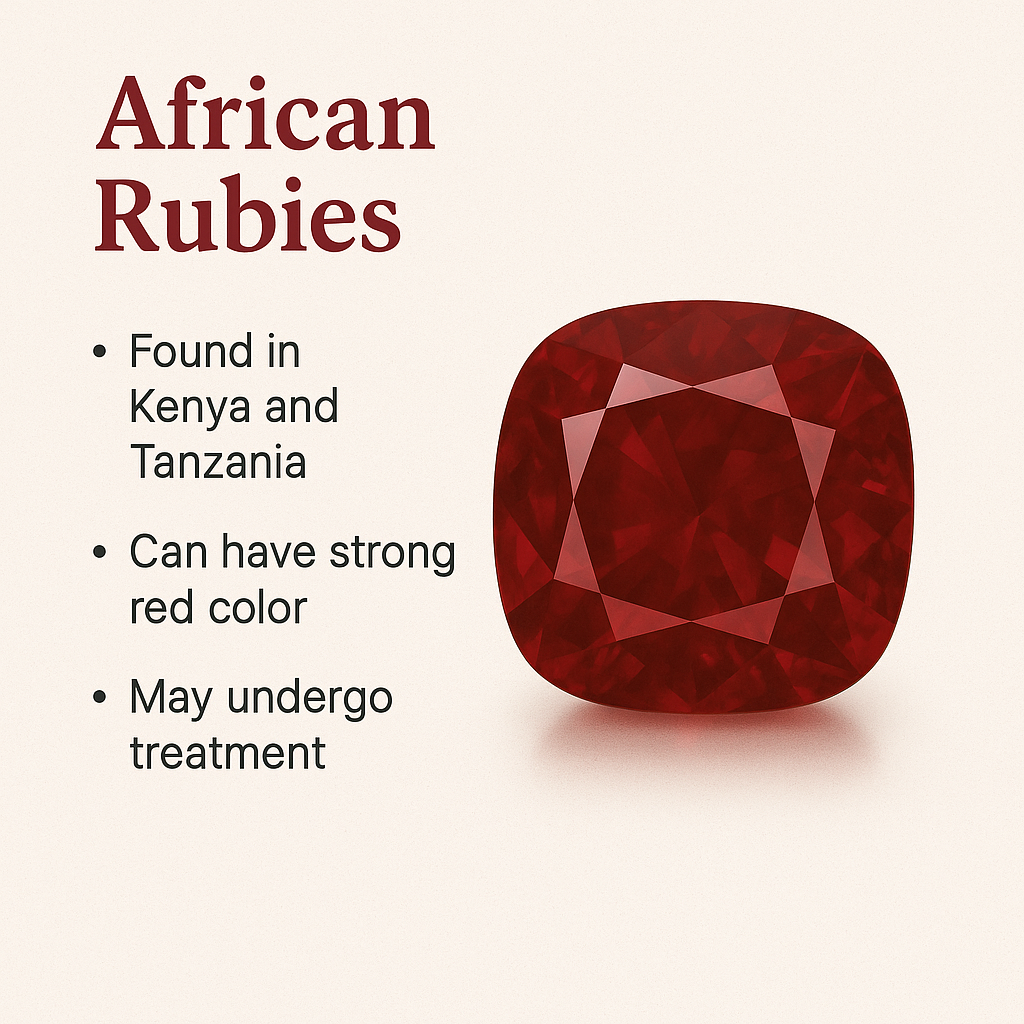
Besides Mozambique, rubies are also mined in Kenya and Tanzania. Tanzanian rubies, in particular, can show rich red color with strong saturation.
These African regions are growing fast as suppliers of quality ruby gemstones. Many stones require treatment to reach gem-quality standards.
8. Synthetic Rubies

Unlike lab-grown rubies, synthetic rubies are created solely to imitate the look of ruby gems. They can be glass-filled or made of other materials with a ruby-like color.
These are commonly used in costume jewelry. They lack the hardness (9 on the Mohs scale) and durability of real rubies.
9. Mogok Ruby
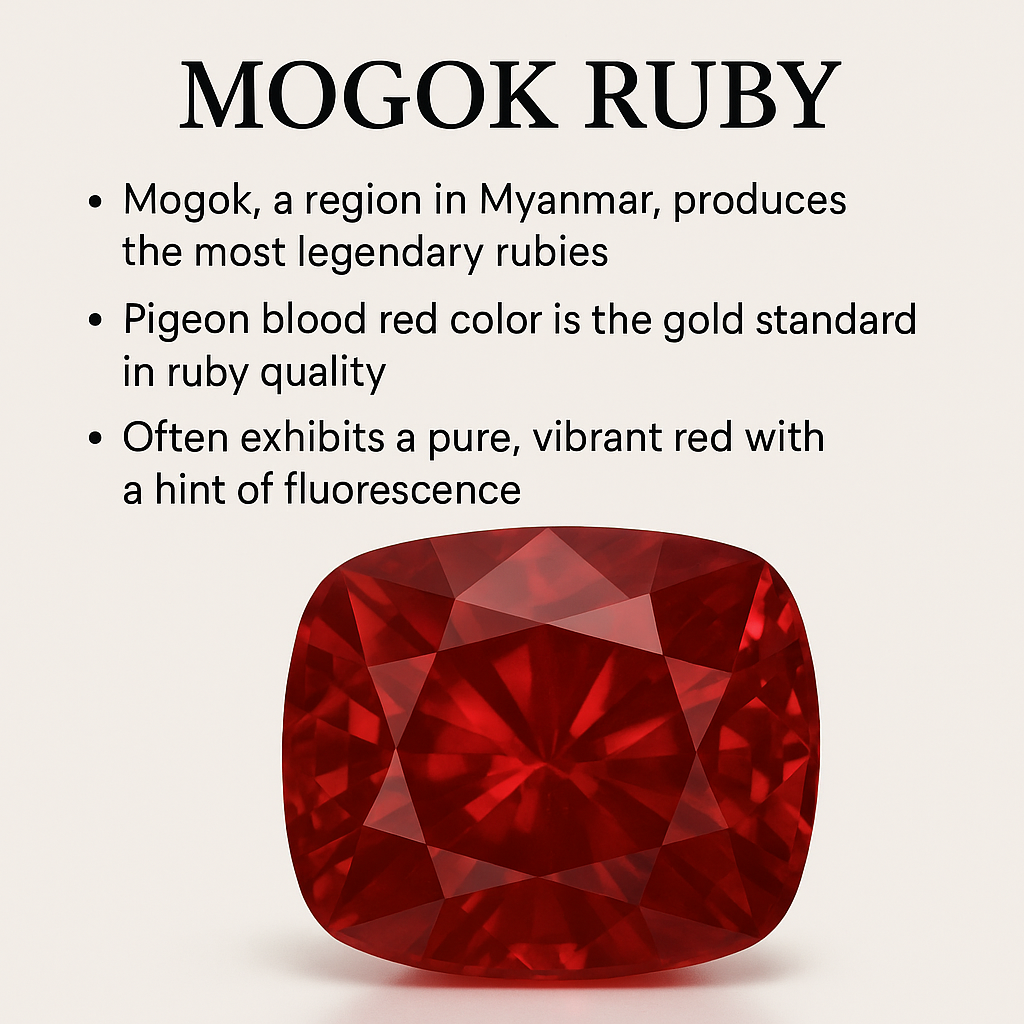
Mogok, a region in Myanmar, produces the most legendary rubies in history. Pigeon blood red color from Mogok mines is the gold standard in ruby quality.
These rubies often feature a pure, vibrant red with a hint of fluorescence. Mogok rubies are rare, expensive, and highly collectible.
Different Types of Ruby Stone Based on Color
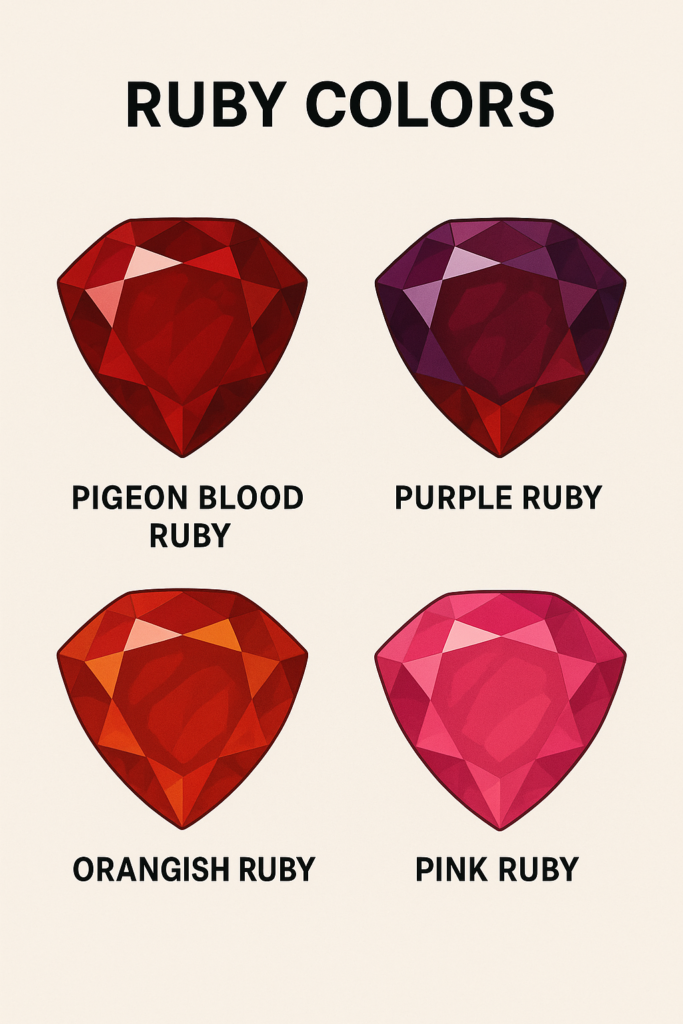
Ruby gemstones come in more than one shade. While we often picture red rubies, the color of rubies can range from light pink to deep purplish tones. These different shades are caused by the presence of chromium and iron in the crystal.
The stronger the chromium, the richer the red. Let me break down the different types of ruby gemstone based on color so you can better understand their value and appeal.
1. Pigeon Blood Ruby
This is the most famous and valuable ruby color. It has a deep, pure red hue with a touch of blue. The name comes from its similarity to the color of freshly spilled blood. Pigeon blood rubies often glow slightly under UV light due to strong fluorescence.
The best-known examples come from Mogok in Myanmar. These are considered good quality ruby stones in the global ruby market. Stones in this color category are rare and command top prices per carat.
2. Purple Ruby
These rubies have a red base with a purplish tint. The color often results from higher iron content. Purple rubies are less common but still beautiful. Some collectors prefer them for their unique tone.
Their lower demand compared to pigeon blood rubies usually makes them more affordable, though they are still a precious gemstone.
3. Orangish Ruby
These are ruby varieties with red hues mixed with orange. The orange tint is often due to a lower chromium and higher iron mix. Orangish rubies are found in areas like Africa and India.
The color is warm and striking but not considered high-grade. These stones rarely fall into the “expensive ruby” tier but can still make great color gemstones for jewelry.
4. Pink Ruby
Pink rubies walk a fine line between ruby and sapphire. In fact, in some countries, they’re classified as pink sapphires. But if the tone is strong enough, they’re sold as rubies.
These have a lighter appearance and are popular in modern jewelry settings. Pink ruby appeals to younger buyers and are often more available than deep red rubies.
5. Star Rubies
These are rare types of rubies that show a star-shaped light pattern (called asterism). This effect is caused by needle-like inclusions of rutile within the stone.
Star rubies must be cut as cabochons (not faceted) to display the star. High-quality star rubies are very valuable, especially in ruby jewelry.


Leave a Reply